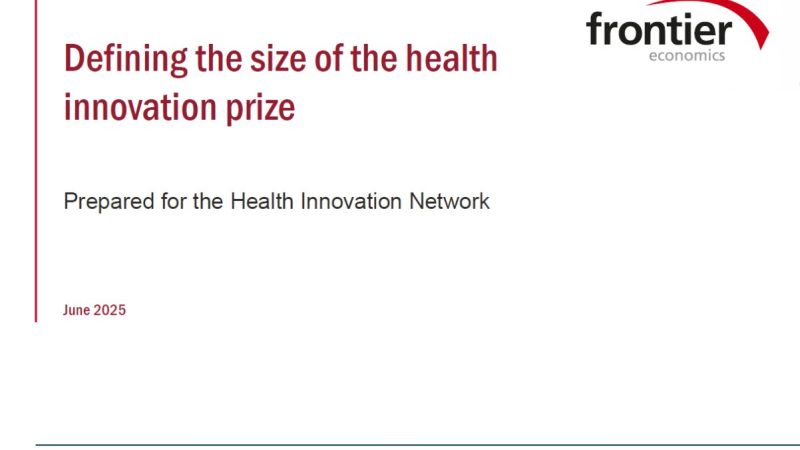Progress on gender equality across OECD setback by two years

The COVID-19 pandemic has set back progress towards gender equality in work across the OECD by at least two years, according to analysis conducted for PwC’s annual Women in Work Index, which measures progress in women’s employment outcomes across 33 OECD countries.*
After a decade of slow but consistent gains for women across the OECD, the Index fell for the first time in its ten year history (by half a point between 2019 and 2020), confirming last year’s predictions that women’s jobs were hit harder than men’s jobs across the OECD by COVID-19.
The two main factors contributing to the fall were higher female unemployment and lower labour force participation rates during 2020. OECD data proves last year’s estimates that women took on more unpaid childcare responsibilities than men during the pandemic, causing them to leave the workforce at higher rates than men. Mothers were three times more likely than fathers to report taking on either the majority, or all, of the additional unpaid care work created by school or childcare facility closures.
UK rise in the Index explained
The UK’s position on the Index rose from 16th to 9th in 2020, strongly outperforming other OECD countries, and placing it almost 10% above the OECD average in 2020. This is the largest annual improvement the UK has achieved in the 10 year history of the Index.
Larice Stielow, Senior Economist at PwC, says this result needs to be treated with caution
“We must be careful in interpreting this result as a real benefit to women’s employment outcomes. A key driver was a temporary fall in men’s median weekly earnings, likely due to the short term effects of the pandemic on wages and the furlough, skewing down earnings.
Men’s earnings have since rebounded, and the gender pay gap in the UK has widened again by 2 percentage points, back up to 14%. However, what is encouraging is that women’s median earnings continued to rise during the pandemic and suggests gender equality in the UK continues on an upward trajectory.”
Pandemic exacerbated other pre-existing UK inequalities
The 2022 edition of the Women in Work report also examines employment outcomes for women across different Ethnic Minority groups living in the UK, and shows that pre-existing labour market inequalities faced by Ethnic Minority women were exacerbated during the pandemic.
In the UK, between July 2019 and September 2021, the unemployment rate for Ethnic Minority women rose by 2.3 percentage points (pp), compared to 0.2 pp for white women, 0.3pp for white men and 0.6 pp for Ethnic Minority men during the same period. Data shows that Ethnic Minority women are over-represented in insecure, low-paid jobs; and also experienced some of the largest percentage falls in employee numbers in contact-intensive sectors such as retail and hospitality which were heavily impacted by COVID-19 lockdowns and job losses.
This inequality also extends to pay. In the UK, for every £1 earned by a white man, a woman from an Ethnic Minority with the same occupation and qualifications earns 87p, while a white woman earns 89p.**
Tara Shrestha Carney, economist at PwC, says
“These pay penalties provide compelling evidence that an individual’s race and gender, and the intersection of these two characteristics, are significant determining factors of pay and professional success. Our analysis factors in important individual and occupational drivers of earnings such as age, occupation, and qualifications. The implication is that we cannot fix employment and pay disparities by addressing skills gaps alone - there is a need to address the systemic and structural gender and racial inequality which exists in the labour market.”
Women may miss out on new green jobs
Furthermore, PwC’s analysis looks towards the future composition of work across the OECD, as the energy sector (responsible for 35% of all carbon emissions globally) transitions to net zero. There will be net job creation across OECD economies - with new green jobs concentrated in the utilities, construction and manufacturing sectors. These three sectors are all heavily male dominated - currently employing 31% of the male workforce across the OECD, but just over 11% of the female workforce.
If nothing is done to improve women’s representation in these sectors, PwC estimates that the employment gap between men and women across the OECD - which measures the additional number of men in employment, expressed as a percentage of the number of employed women - will widen by 1.7 percentage points by 2030 (rising from 20.8% in 2020 to 22.5% in 2030).***
Ian Elliott, Chief People Officer at PwC UK says,
“It is incredibly disappointing to see the extent to which COVID-19 has started to reverse a decade of progress for women in work globally. While the UK has continued to make progress in many areas, this report shines a light on the extent to which inequalities persist and may even widen further without considered policy responses. It is clear that building a truly inclusive and equal workplace still requires significant focus and support from governments, policy-makers and businesses.
“There is a clear need for investing in and providing upskilling and reskilling opportunities for women of all backgrounds. Creating more flexible working opportunities for both men and women - such as shared parental leave and affordable childcare - can also play a substantial role in reducing the inequalities around unpaid care and domestic work that remain for women.”
Latest Women In Work Index - UK nations and regions focus
The UK is ranked 9th on the Index against the OECD group of countries, with New Zealand topping the table for the first time, followed by Luxembourg and Slovenia.
The South West retains first place for the third year in a row in the 2020 Women in Work Index with its Index score increasing from 42.2 to 44.0; with Wales, Scotland, and Northern Ireland in 2nd, 3rd, and 4th place respectively. The South West has the third lowest female unemployment rate (3.7%), second lowest labour force participation rate gap (5%) and continues to have the highest female labour force participation rate in the country at 79%.
Wales saw the largest improvement in its Index score, increasing from 35.4 in 2019 to 43.3 in 2020. This boosts it to second place, up five spots from 2019. The North West was the only other region in 2020 to move from below to above average on the Index.
* The five indicators that make up the Women in Work Index are: the gender pay gap, the female labour force participation rate, the gap between male and female labour force participation rates, the female unemployment rate, and the female full-time employment rate.
**Our ethnicity and gender pay gap analysis builds on the analysis produced in our Strategy& Ethnicity Pay Gap Report 2021 and applies only to the UK. It takes national earnings data from the Annual Population Survey, disaggregated by gender and by ethnic group, and statistically controls for a range of personal and work-related pay-determining characteristics (such as age, region, occupation and qualifications).
*** This is based on PwC’s analysis of International Labour Organisation (ILO) scenario data on jobs composition by sector in 28 OECD countries at 2030. The employment gap is estimated to widen from 20.8% to 22.0% by 2030 in the absence of climate action, and to 22.5% when taking account of the energy sector’s transition to net zero across OECD economies.
The full Women In Work Index can be found here http://pwc.co.uk/womeninwork




